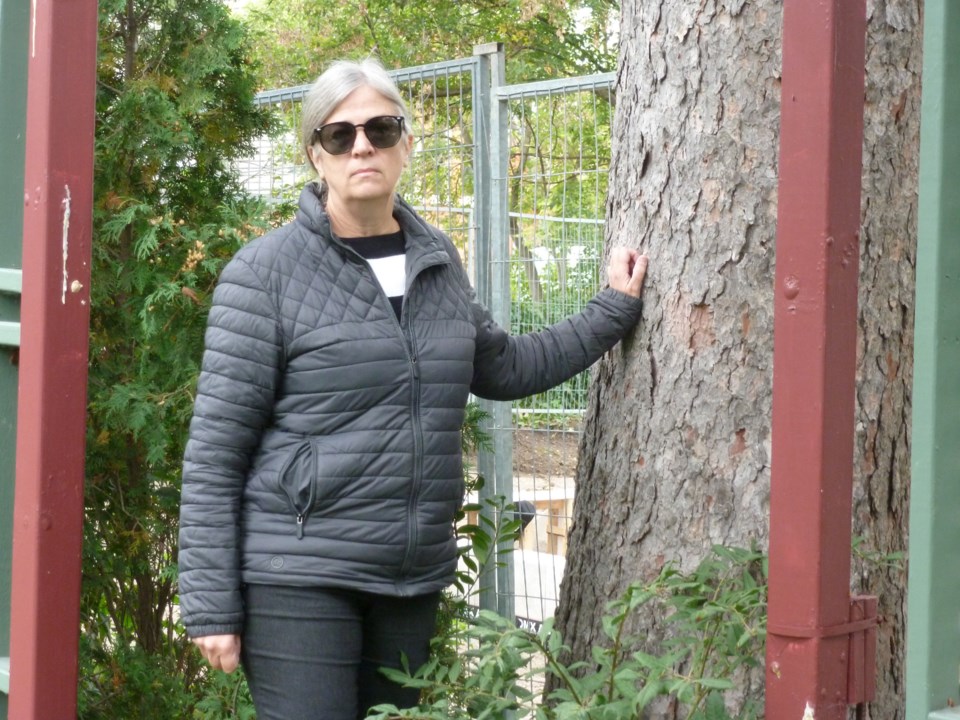Efforts to save single trees in Barrie continue to grow.
City councillors are taking — or looking at — several measures to protect residential trees from the effects of encroaching construction.
But do they go far enough?
Arlene McCann, who lives on William Street in the city's Allandale area, has a detached accessory dwelling under constitution that’s backing onto her yard and its trees, and she is wary.
“I want to ensure the wording of these bylaws and the proposed amendments are thorough and precise to give them real strength,” she told BarrieToday. “The trouble we are now in with the detached secondary dwellings is that the (city) council had good intentions, but did not follow through on wording that would give fair restrictions to these fine intentions.”
One council measure is having city staff conduct a cost/benefit analysis associated with individual or single tree bylaws to mitigate future damage of privately owned trees due to private construction and excavation projects.
“(Coun.) Jim Harris’ motion regarding the cost/benefit analysis is a good starting point, but I am concerned that it will not reach far enough to get a true understanding of the long-term environmental costs from removing many mature trees and having them replaced with saplings,” McCann said.
Also that this investigation include individual heritage trees, an evaluation of best practices from other municipalities, the potential for a more comprehensive approach to mature tree protection beyond excavation and construction, and a public and stakeholder consultation process.
“There was a desire… to take a more fulsome look at a tree protection bylaw,” said Coun. Keenan Aylwin, who made the motion at the Sept. 21 city building committee meeting.
“Hopefully, it does also approach the saving potentially of trees, or how do we incentivize individuals to take a proactive approach at really looking at protection when you are doing development,” Coun. Ann-Marie Kungl said.
So-called heritage trees are also protected under the tree preservation bylaw, those formally designated by city council as being unique and of importance to Barrie in terms of distinctive form, size, age and/or historical significance.
McCann again stressed the value of specific measures.
“It is to be hoped the vague wording of the motion will allow for a study with both depth and breadth of this far-reaching issue,” she said. “I am curious to know, if they have started this study, what approach they are taking. The wording ‘…the potential for a more comprehensive approach to mature tree protection…’ leaves the scope of this study wide open for interpretation.”
Councillors will vote on this second measure at tonight’s meetings, general committee and then city council.
Also on the table Monday are that proposed changes to Barrie’s zoning bylaw include increases to the minimum side- and rear-yard setback requirements — in part to address setbacks to surrounding vegetation and to allow more space for landscape buffers to be planted.
“As to the setbacks — yes, it is great they have been increased,” McCann said. “These setbacks will restrict homes in backyards for many properties.
She also asked: “I am concerned as to the definition of a ‘landscaped area’ in these wider setbacks — does this mean simply soil and grass seed? Or something more elaborate?”
Also that detached accessory dwellings be subject to a scoped site plan control review process, which will include providing information about existing on-site and surrounding landscape conditions, including trees. Through the proposed scoped site-plan control review and approval process, a sign could be required to be posted on the property to notify neighbours of any development plans.
“People need to know what’s happening,” McCann said.
Barrie’s 1990 tree preservation bylaw regulates the injury or destruction of trees in woodlots, of at least half an acre in size and with a tree density from 250 to 1,000 trees.
But McCann has concerns about changing the zoning bylaw to permit a maximum lot coverage of 50 per cent when residential uses are located in the same building as an institutional use on land zoned institutional, and permitting a maximum lot coverage of 50 per cent when residential uses are located on the same lot as institutional uses on land zoned institutional.
“We’ve got a few different churches that are on the periphery of Barrie with large tracts of land, that’s one thing, if you’re looking at developing those,” she said. “But of you’re looking at in-town, developed neighbourhoods that are going to have more intensification projects near it, and that we need to hang onto with everything we have of the green space we have now, I have a problem with infilling those green spaces.”
Provincial and city laws allow a detached home, in addition to a second suite in the main house, on one property.
Proposed changes to Barrie’s zoning bylaw would address barriers to housing affordability, clarify definitions, update development standards for second suites and detached accessory dwellings, and improve implementation of the bylaw to support affordable housing programs.
These changes are to clarify that a maximum of one detached accessory dwelling unit, is permitted per lot as an accessory use to a single-detached dwelling, a duplex dwelling, a semi-detached dwelling unit and a street townhouse.
As of Friday, 11 people were scheduled to make deputations at Monday night’s council meeting about changes to Barrie’s zoning bylaw.



